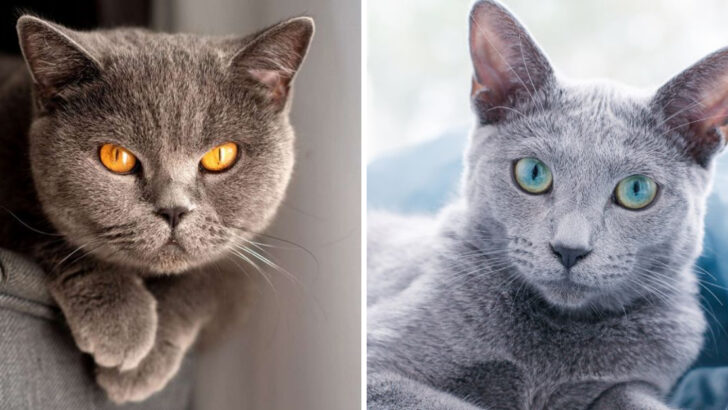One looks like royalty in a velvet coat.
The other looks like it owns a library and judges your grammar.
The British Shorthair and the Russian Blue may both wear shades of gray, but that’s where the similarities stop. One is chunky, cuddly, and built like a teddy bear. The other is sleek, silent, and has the energy of a moody poet with a gym membership.
People mix them up all the time—until they meet them.
Then it becomes crystal clear:
One would nap through a house party.
The other would vanish the moment the doorbell rings.
From their eyes to their attitudes, their purrs to their power moves, these cats live very different lives. Want a soft-spoken shadow who slips through the night? Or a chill, plush ball of calm who won’t even flinch at a vacuum?
Let’s break down the key differences between these two mysterious felines.
Coat Color and Texture
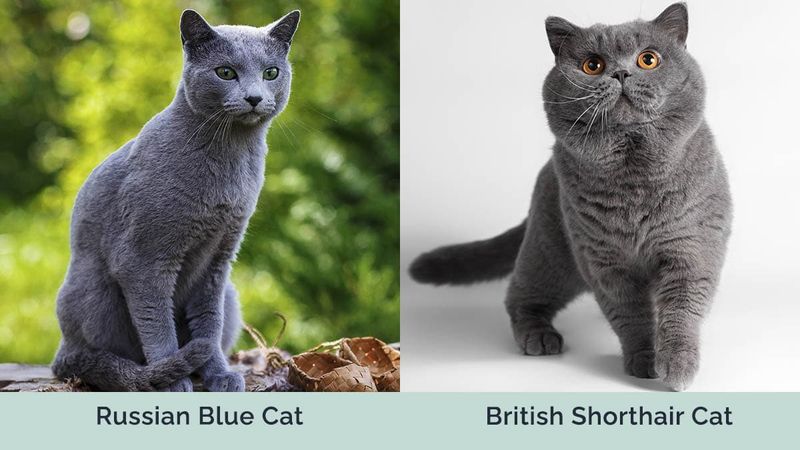
The British Shorthair boasts a plush, dense coat that feels incredibly soft to the touch. Often seen in shades of grey, this breed’s fur is as much a visual delight as it is tactile. In contrast, the Russian Blue’s coat is shorter and silkier, with a lustrous blue-grey sheen that reflects light beautifully. This shimmering effect gives the Russian Blue a distinguished appearance, setting it apart from the slightly bulkier British Shorthair. These differences in coat appearance and feel are among the most immediate and striking distinctions between these two breeds.
Eye Color
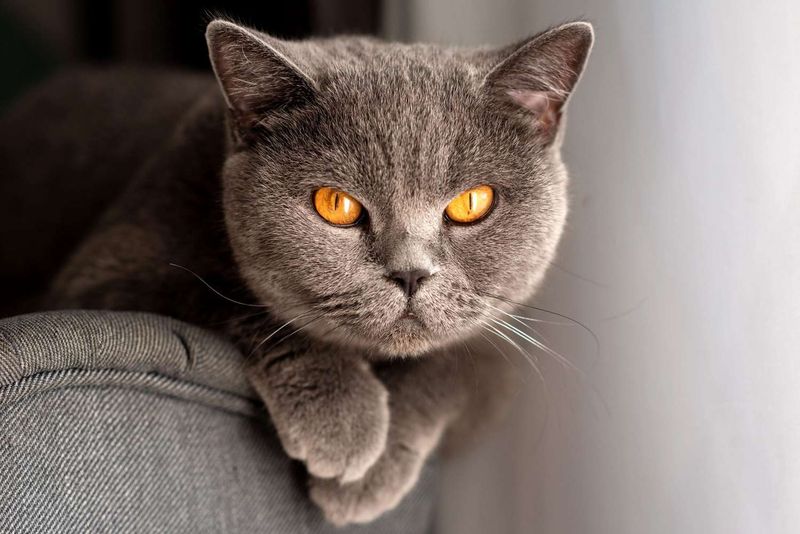
Gazing into the eyes of a cat reveals much about its breed. British Shorthairs are famous for their striking orange eyes that contrast beautifully with their grey coats. This vivid eye color contributes to their enchanting and dignified look. On the other hand, Russian Blues captivate with their bright green eyes, which are often described as vivid and jewel-like. The contrast between a Russian Blue’s eyes and its shimmering coat enhances its elegance. These eye color differences not only distinguish the breeds but also add to their overall allure.
Body Structure
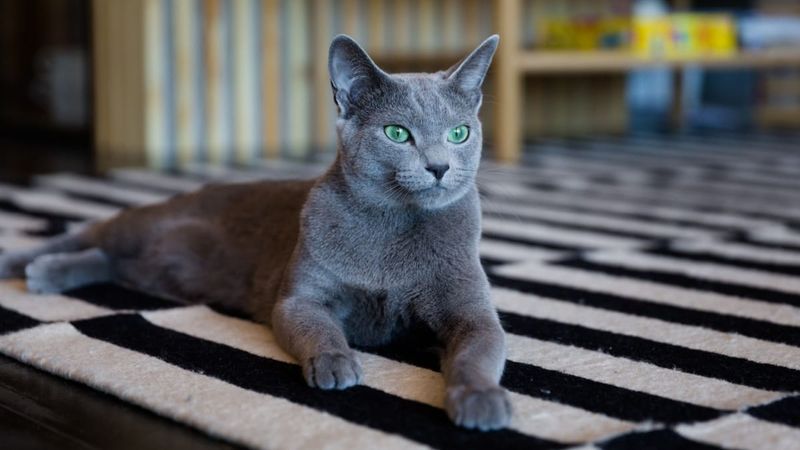
The British Shorthair and Russian Blue present distinct differences in body structure. British Shorthairs exhibit a robust, muscular build, giving them a solid and powerful appearance. They are often described as stocky and round, with a strong, sturdy frame. In contrast, Russian Blues are known for their slender, elegant bodies. Their graceful and lithe appearance is complemented by their long legs and fine bone structure. This contrast in body types makes each breed unique, offering different kinds of appeal to cat lovers and owners alike.
Personality Traits
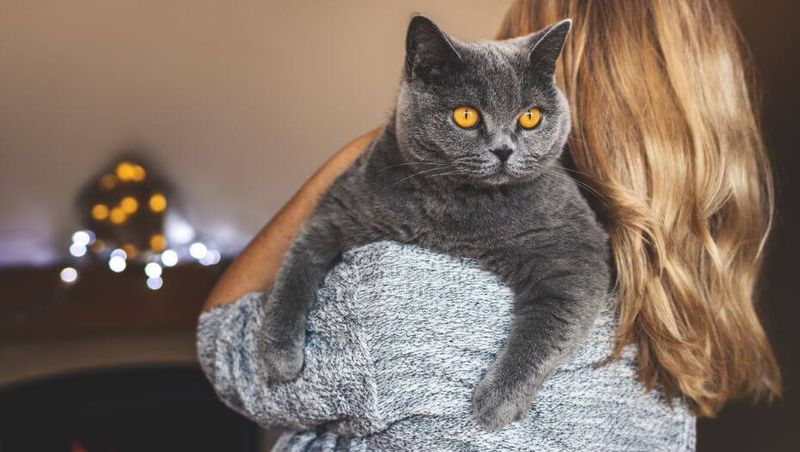
British Shorthairs are often described as calm and easygoing, making them wonderful companions for those seeking a relaxed feline friend. Their laid-back nature makes them adaptable to various living environments. Conversely, Russian Blues are known for their reserved and shy demeanor. They bond closely with their owners but may be cautious around strangers. This breed’s loyal yet independent nature requires patience and understanding. These personality traits highlight the contrasting temperaments of these breeds, offering different companionship experiences.
Grooming Needs
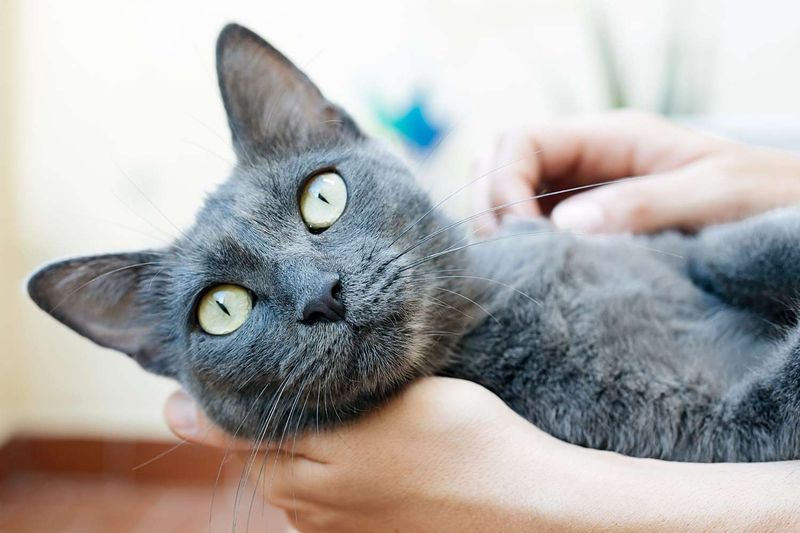
Grooming is a significant aspect of cat care, with each breed having unique needs. British Shorthairs have a thick, plush coat that benefits from regular brushing to maintain its lush appearance and minimize shedding. Despite their dense fur, they are relatively low-maintenance. Russian Blues, with their short, fine coats, require less frequent grooming. Their fur is known for being non-shedding, which appeals to those seeking a low-maintenance pet. These differences in grooming needs cater to varying preferences among cat owners.
Origin and History
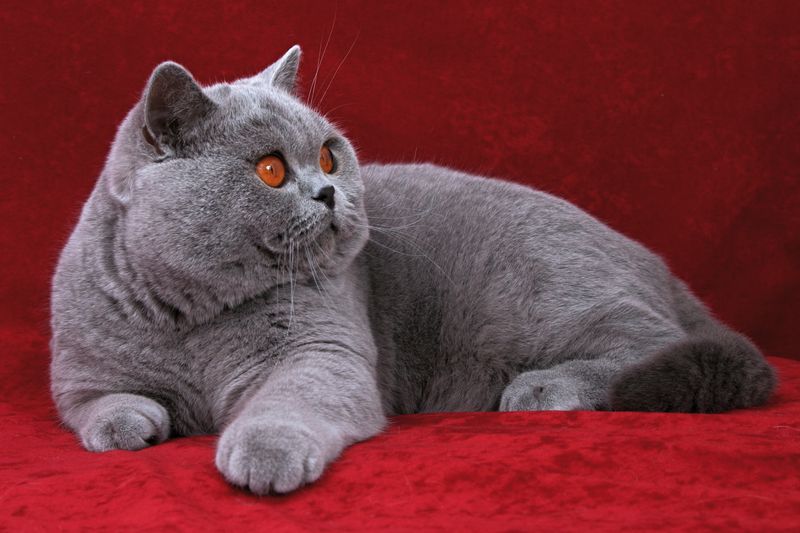
The British Shorthair’s origins trace back to cats native to England, where they were prized for their hunting skills. Over time, they became a beloved pet, celebrated in literature and art. Russian Blues have a more mysterious past, believed to originate from the Archangel Isles in Russia. Their history is shrouded in legend, with tales of being favored by Russian czars. These historical roots contribute to each breed’s mystique and charm, captivating those interested in feline history and heritage.
Adaptability
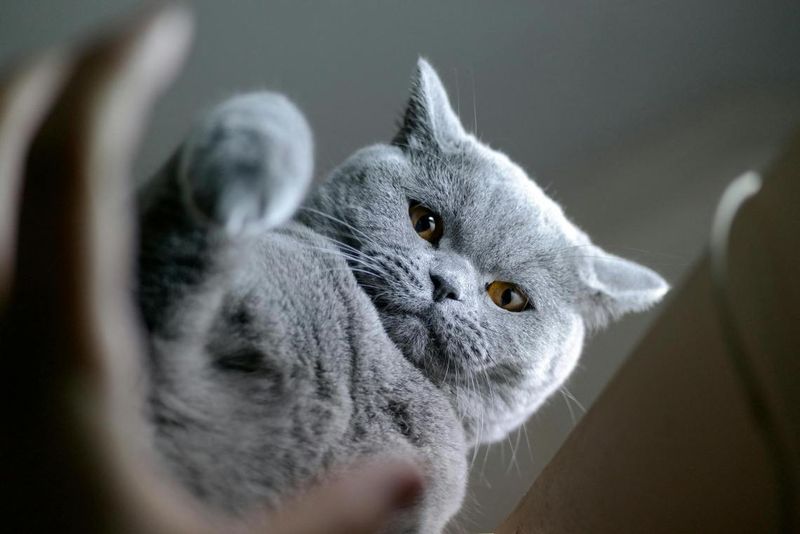
Adaptability marks a key difference between these breeds. British Shorthairs are known for their adaptable nature, thriving in bustling households and remaining unfazed by changes in environment. They are social and adjust well to various family dynamics. In contrast, Russian Blues prefer serene and stable environments. They thrive in quieter homes where they can establish routines. This breed’s preference for tranquility highlights its need for a stable setting, appealing to owners who appreciate a calm, predictable companion.
Vocalization
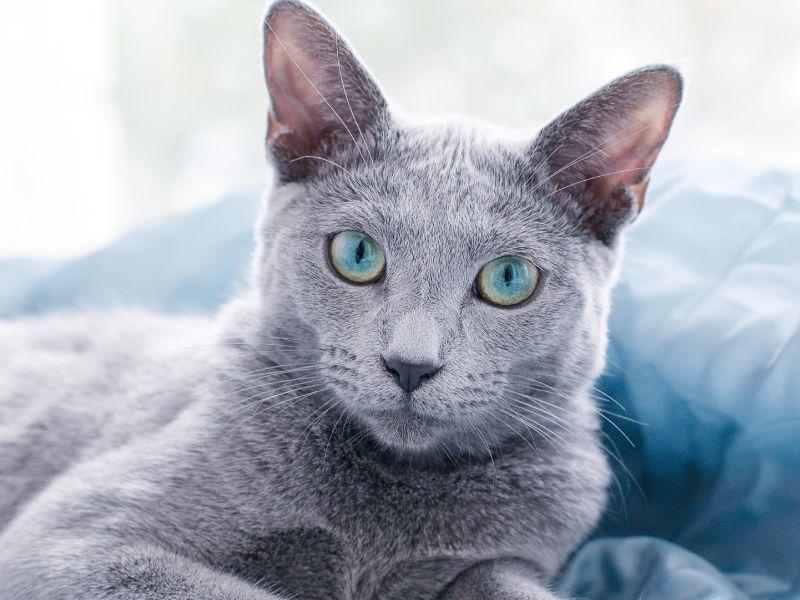
Vocalization varies significantly between the two breeds, offering distinct auditory experiences. British Shorthairs are generally quiet cats, using soft meows and purrs to communicate. Their subdued vocal nature makes them ideal for those who prefer a quieter pet. Conversely, Russian Blues are known for their melodious voices. They often engage in conversations with their owners, using a range of sounds to express their needs and emotions. This vocal difference adds to the unique appeal each breed offers to cat enthusiasts.
Social Interactions
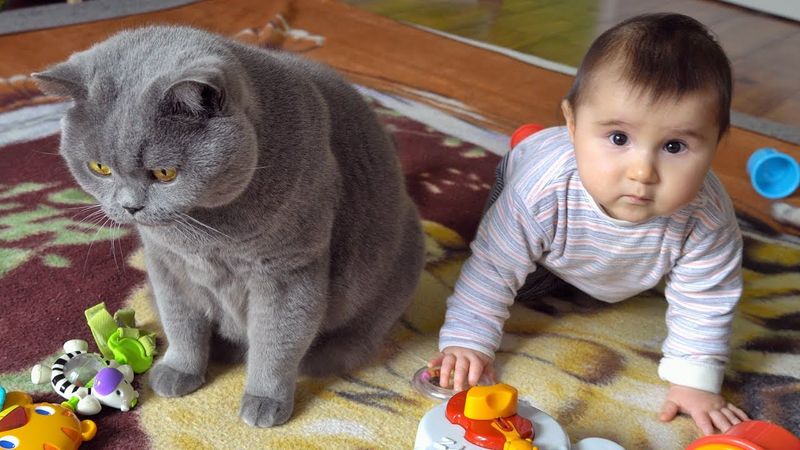
Social interactions highlight key behavioral differences. British Shorthairs are typically outgoing and enjoy interacting with children and other pets. Their friendly nature makes them well-suited to active households. In contrast, Russian Blues are more reserved, often preferring to observe their surroundings rather than actively engage. They bond closely with their chosen humans, valuing deep connections over frequent interactions. These social tendencies define the breeds’ suitability for different lifestyles and family settings.
Exercise and Activity Levels
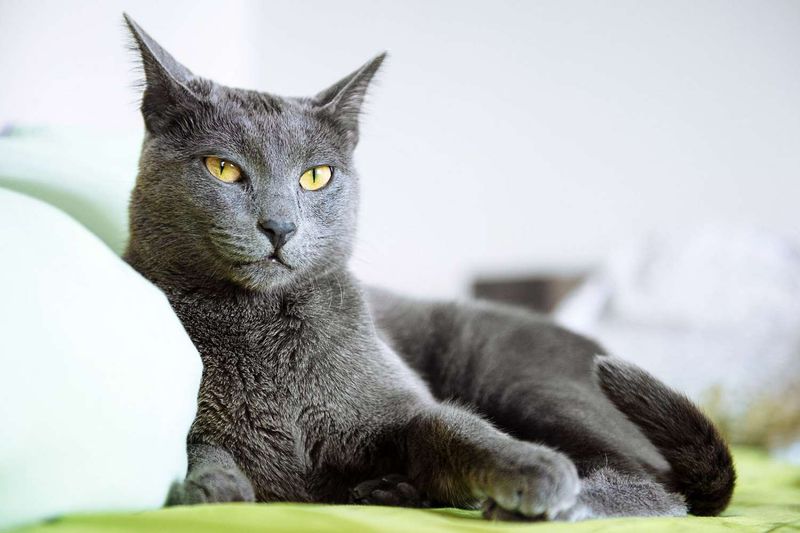
Exercise and activity level requirements differ notably. British Shorthairs enjoy moderate play and exercise, content with short bursts of activity. They are not overly demanding, making them suitable for those with a relaxed lifestyle. Russian Blues, though initially reserved, are playful once comfortable. They enjoy interactive play sessions and mental stimulation. Their active nature requires dedicated playtime to keep them entertained. These differences in activity levels cater to various owner preferences for pet engagement and energy.
Health and Lifespan
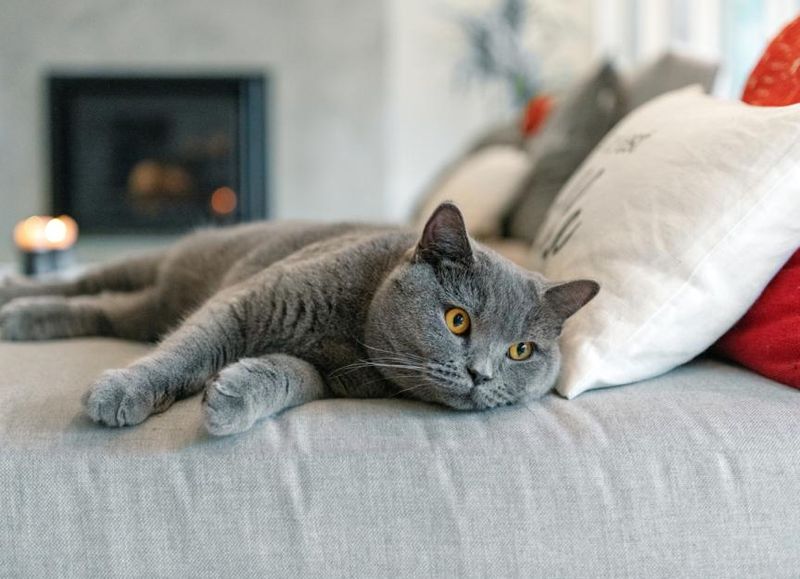
Health considerations and lifespan provide insight into breed care. British Shorthairs are generally healthy, with a lifespan ranging from 12 to 20 years. Regular veterinary check-ups help maintain their well-being. Russian Blues are similarly robust, known for their longevity. With proper care, they can live well into their late teens. Their genetic predisposition to good health makes both breeds appealing to those seeking long-term companions. Understanding these health aspects aids potential owners in making informed decisions.
Popularity and Recognition
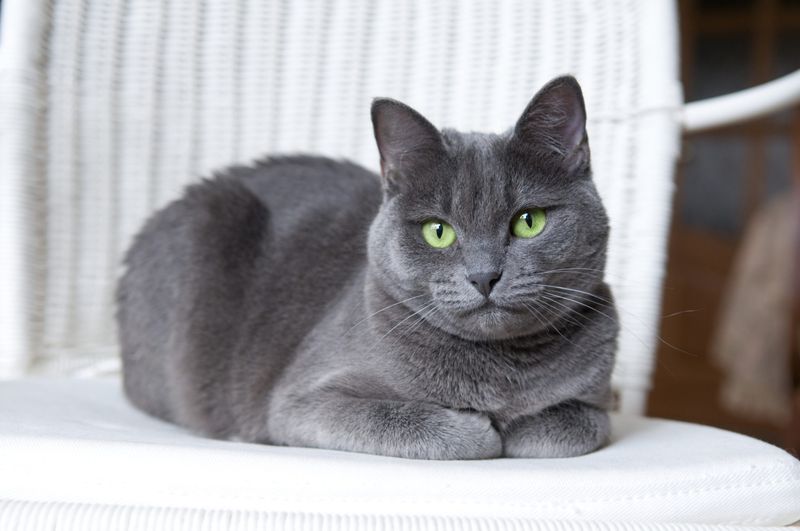
Popularity and recognition are significant among cat lovers. British Shorthairs have long been celebrated in the UK, often featured in cat shows and breeding programs. Their distinctive look and personality have earned them a loyal following. Russian Blues, while less widespread, are admired for their elegance and mysterious aura. They enjoy niche popularity among enthusiasts who appreciate their unique charm. These differences in recognition highlight the varied appeal and fanbase each breed commands across different regions.

